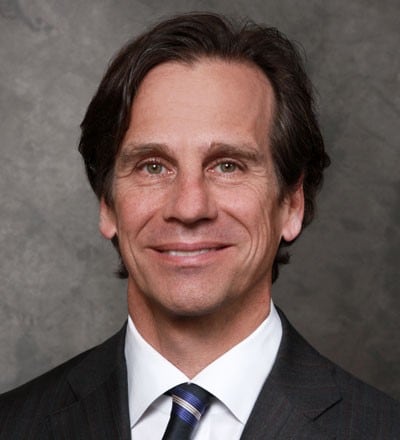Digital transformation: Moving from handshakes to householding at Comerica
By Kelly LeVoyer, Marketing Editorial Director, SAS
Editor’s note: In this Analytical Marketing series, learn how a few dynamic executives at top brands have led their organizations into the modern world of data-driven marketing.
Jim Weber knows firsthand the challenges of change – on multiple levels. He joined Comerica in 2007 for his first gig as a financial services CMO. Shortly thereafter, the economy collapsed.
Comerica was a traditional conservative bank according to Weber, with good earnings and solid customer relationships with the local business banking market. And while its heritage helped the bank weather the financial storm better than most, that heritage also posed a cultural challenge.
“We were a business bank, based on handshakes and one-to-one relationships,” Weber says. “Data, marketing . . . those were secondary and didn’t drive the business. But there’s nothing like hard times to make you stop and take a cold, hard look at what’s working and what’s not.”
Weber pressed for a digital agenda early on in order to generate the data and metrics that could start quantifying the bank’s potential. “How can you talk about being a relationship bank without knowing the full breadth of the relationship? This message made the digital agenda resonate with the employee base at Comerica,” he says.

Phase one: Convincing skeptics
But there was a lot of skepticism around the shift to mobile banking and digital access, especially on the business banking side of the house. The use cases and potential for the retail banking side was much more obvious. But by quantifying the value of holistic customer relationship management, Weber was able to get the attention of the business banking unit.
Phase two: Partnering with IT
The next phase of the shift required getting IT on board as a partner with marketing, which was a big relationship change. Weber says that he didn’t have a collaborative relationship with his CIO at first. But after that CIO retired, and with the help of an outside consultant, Weber says that his organization came to see IT as teammates rather than obstacles. The organization’s outdated data architecture prevented marketing from effectively mining data, so a partnership was the best path to rectifying that.
“We couldn’t continue to do things the traditional way any more,” he says. “We needed the ability to go in and mine the data, take insight to another level, and find the opportunities. In the banking industry, looking at things like householding and superhouseholding – these things change how the customer interacts with the bank. It impacts the customer experience.”
Phase three: Creating governance
To help overcome those barriers, IT and marketing came together to sponsor a data governance council to help consolidate how the data was being managed across the company’s different functional silos. “We didn’t have a data architecture, data standards, or governance,” says Weber. “It was being done in pockets. Some business units were skeptical and feared they would lose control of how they thought things needed to be done. It took time, but we broke through that.”
Now, Comerica can drive strategies like next-best offer and personalization, and is integrating social media and predictive analytics into their marketing capabilities. “This is all really about positioning marketing away from an order-taking organization and into a position of strategic leadership value for the company,” Weber says.
He adds, “Data will help us quantify the value of collaboration across the bank. SAS was a way in for us from a marketing perspective. We didn’t feel we needed to introduce a new platform when our IT department was already so happy with it.”
Interactive experience
Modern technology has upended the way brands and consumers engage. What will the customer experience look like in 2030? And how will brands evolve to meet the expectations of future consumers? These are some of the questions addressed in this report by SAS and Futurum Research, Experience 2030: The Future of Customer Experience.
Also in this series
- Brand equity has a big role in RCI's strategy: Brand equity isn't about what you sell, it's about your customers' perception of you, your products and your services. It's storable, but perishable.
- The value of marketing metrics at Visa: Marketing metrics are the bane of many marketing teams, but at Visa metrics not only matter but make a real difference in strategy and brand value.
Get More Insights
Want more Insights from SAS? Subscribe to our Insights newsletter. Or check back often to get more insights on the topics you care about, including analytics, big data, data management, marketing, and risk & fraud.
